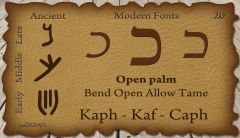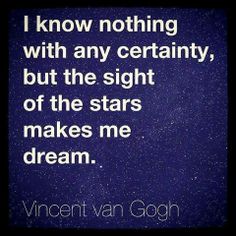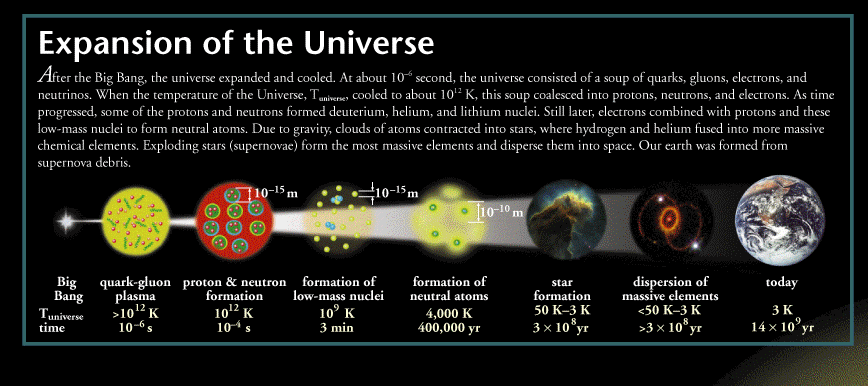Imbolc Imbolc Moon
 The Imbolc moon has had its night in earth’s shadow, its night as super and blue and red. Hey, up in the sky, it’s Supermoon! And last night it was wonderful again. High, full, behind a faint veil of clouds. Orion and the moon. My two favorite celestial objects. Well, ok, the sun, too, but I can never look at it.
The Imbolc moon has had its night in earth’s shadow, its night as super and blue and red. Hey, up in the sky, it’s Supermoon! And last night it was wonderful again. High, full, behind a faint veil of clouds. Orion and the moon. My two favorite celestial objects. Well, ok, the sun, too, but I can never look at it.
Something in a full moon moves me to the depths of my soul. I can find myself tearing up, a catch in my throat at the sheer extravagance of its beauty. It’s offered over and over, available to all, free.
So, too, Orion. He rises. Greets any who bother to find him. He stands always ready astride the horizon, a hunter and his dog. I don’t know whether he remembers our nights in Muncie while I watched over the entrance gate at the factory, but I like to think he does.
The night sky, in its shorter versions and in its Winter Solstice maximum, offers solace to those of us who want it. The night is, to paraphrase LP Hartley, a foreign country. They do things different there.
 Last night I went back to Beth Evergreen, more kabbalah. Studying the kabbalah at night, especially under a full moon. Yes. Learning about more double letters: Pey, Caph, Reish, Tav.
Last night I went back to Beth Evergreen, more kabbalah. Studying the kabbalah at night, especially under a full moon. Yes. Learning about more double letters: Pey, Caph, Reish, Tav.
I know this Jewish immersion of mine must seem odd to some of you who read this; but, it’s happened over many years, a sort of there and back again phenomenon. In this current instance Kate’s conversion long ago made us seek out a synagogue, just to see. We found Beth Evergreen, a special place, unique I imagine, even among Reconstructing congregations.
It was long ago though I read Isaac Bashevis Singer. Chaim Potok. Later, Rebecca Goldstein. It was long ago that I walked into the synagogue in Muncie for an anthropology assignment. It was long ago that I dated the jeweler’s daughter, Karen Singer, and found her father’s knowledge of philosophy astounding. Over the years many Jews have come into my life and I’ve always felt comfortable around them. As if we shared a common spirit. At Beth Evergreen that feeling surfaced immediately and has grown deeper over time.
 Being part of the tribe? No. Not for me. Walking along with the tribe as it wends its way through this moment in time? Yes.
Being part of the tribe? No. Not for me. Walking along with the tribe as it wends its way through this moment in time? Yes.
Let me give you an example. The friend I mentioned yesterday, Bonnie Houghton, the green cemetery and burial, rabbi in training, Bonnie, got me going on the Recycle Me idea. It fits so well with my pagan sensibility and it’s something I can act on through this community.
Yesterday was Tu B’Shvat, the new year of the trees. It’s a part of the Jewish holiday year, just like Yom Kippur, Purim and Passover. Kate and I went to the celebration yesterday before kabbalah. Later, as I rested before returning for kabbalah, an image struck me: a Tu B’Shvat celebration in our yet-to-be green cemetery. We would be honoring trees, trees of all kinds yes, but especially, in this celebration, those trees growing from the graves of deceased members of Beth Evergreen.
Can you imagine? An ancient holiday celebrating trees and the gifts that they offer, now including trees with their roots literally in members of the congregation? How mystical, how wonderful would that be. Out there, on the mountain side, perhaps a mountain stream running nearby, a breeze rolling down the slope and my tree, the tree that is a tree and me, our leaves rustling as the gathered folks sing, pray. Yes.

 Instead of watching the state of the union Kate and I participated in a presentation on green burial and the possibility of creating a green cemetery. Beth Evergreen has been moving, slowly, toward a Jewish cemetery over the last six years, but Bonnie Houghton, a rabbi in training and former long time Forest Service employee has accelerated the process through her own efforts. In her current work with the Mountain Land Trust she sees properties presented for conservation easements. Some don’t qualify for that purpose, but would work well for green cemeteries, where burials eschew vaults, fancy caskets and backhoes for hand-dug graves, wicker/pine/cardboard/shroud coverings for the corpse, and small, usually flush with the ground grave markers.
Instead of watching the state of the union Kate and I participated in a presentation on green burial and the possibility of creating a green cemetery. Beth Evergreen has been moving, slowly, toward a Jewish cemetery over the last six years, but Bonnie Houghton, a rabbi in training and former long time Forest Service employee has accelerated the process through her own efforts. In her current work with the Mountain Land Trust she sees properties presented for conservation easements. Some don’t qualify for that purpose, but would work well for green cemeteries, where burials eschew vaults, fancy caskets and backhoes for hand-dug graves, wicker/pine/cardboard/shroud coverings for the corpse, and small, usually flush with the ground grave markers. I found this conversation oddly energizing. Something about the cliched final resting place has more resonance as I move toward my 71st birthday. Having a cemetery which celebrates the natural order of life and death with decay rather than chemicals, concrete, and metal makes so much sense to me. Having a tree planted over my cremains, or in them, feels right. Too, we could bury the remains of our many dogs with us. That would make for a unique family plot.
I found this conversation oddly energizing. Something about the cliched final resting place has more resonance as I move toward my 71st birthday. Having a cemetery which celebrates the natural order of life and death with decay rather than chemicals, concrete, and metal makes so much sense to me. Having a tree planted over my cremains, or in them, feels right. Too, we could bury the remains of our many dogs with us. That would make for a unique family plot. Hippity hop to the ortho shop. Kate’s got an appointment at Panorama Orthopedics today. Her right shoulder. She can no longer hold things up with her right arm and has to use two hands to put dishes away, sometimes to lift a cup. Annoying and painful. Screws up her sleep, too. She needs some kind of solution, more than likely a shoulder replacement. This is the first step, a consult to see what her options are.
Hippity hop to the ortho shop. Kate’s got an appointment at Panorama Orthopedics today. Her right shoulder. She can no longer hold things up with her right arm and has to use two hands to put dishes away, sometimes to lift a cup. Annoying and painful. Screws up her sleep, too. She needs some kind of solution, more than likely a shoulder replacement. This is the first step, a consult to see what her options are. An interesting week ahead. A session on green burial tomorrow night at CBE. It’s part of a conversation about creating a Jewish cemetery up here in the Evergreen/Conifer area. Oddly, I think I’d like to work on that. The next night, Wednesday, is Tu B’Shevat, the New Year of the Trees. Judaism has a lot of pagan inflections, Tu B’Shevat and Sukkot, a harvest festival at the end of the High Holidays, for example. Looking forward to this one because there’s a seder, too, with seven species of fruit and nuts. I’ll explain more on Wednesday. After the this celebration is another Kabbalah session, more double letters in the Hebrew alphabet.
An interesting week ahead. A session on green burial tomorrow night at CBE. It’s part of a conversation about creating a Jewish cemetery up here in the Evergreen/Conifer area. Oddly, I think I’d like to work on that. The next night, Wednesday, is Tu B’Shevat, the New Year of the Trees. Judaism has a lot of pagan inflections, Tu B’Shevat and Sukkot, a harvest festival at the end of the High Holidays, for example. Looking forward to this one because there’s a seder, too, with seven species of fruit and nuts. I’ll explain more on Wednesday. After the this celebration is another Kabbalah session, more double letters in the Hebrew alphabet. Rigel has her second appointment at the Vet Referral Clinic with Dr. Bayliss this Friday, too. I’m excited about it because we’ll get a clearer picture of what’s going on with her. And, it’s not the dire prognosis we anticipated when we took her in a week ago last Friday.
Rigel has her second appointment at the Vet Referral Clinic with Dr. Bayliss this Friday, too. I’m excited about it because we’ll get a clearer picture of what’s going on with her. And, it’s not the dire prognosis we anticipated when we took her in a week ago last Friday. Kate sewed most of the day yesterday. May not seem like a big deal, but it is. Her energy and her energy management skills are both improving and she’s enjoying life more. I’m so glad to see it.
Kate sewed most of the day yesterday. May not seem like a big deal, but it is. Her energy and her energy management skills are both improving and she’s enjoying life more. I’m so glad to see it. Work on online education for Beth Evergreen will continue today, too. Marilyn Saltzman found some mussar sites and I’m going to add Coursera and EDx courses. I also plan to look at other, more general online education sites. So far I’ve focused on online education focused on Jewish studies, but I imagine there are more courses. A fun project.
Work on online education for Beth Evergreen will continue today, too. Marilyn Saltzman found some mussar sites and I’m going to add Coursera and EDx courses. I also plan to look at other, more general online education sites. So far I’ve focused on online education focused on Jewish studies, but I imagine there are more courses. A fun project. Kabbalah last night. It’s an odd experience for me in some ways. I’m learning a lot, seeing how to see in a very new way, looking at the bones of the universe. The thought world of the kabbalists is strange and wonderful, allowing for a peak behind the curtain of creation. Yet. There is too a limiting factor.
Kabbalah last night. It’s an odd experience for me in some ways. I’m learning a lot, seeing how to see in a very new way, looking at the bones of the universe. The thought world of the kabbalists is strange and wonderful, allowing for a peak behind the curtain of creation. Yet. There is too a limiting factor. It’s more difficult to follow this approach in a faith community, even one as open and accepting of diverse thought as Beth Evergreen. The kabbalists influenced the prayer book and worship practices of all Jews, orthodox to reconstructionist. The Jewish civilization which Rabbi Mordecai Kaplan wanted to further through his project of reconstruction, though it has universalist instincts, remains firmly rooted in the tribal history.
It’s more difficult to follow this approach in a faith community, even one as open and accepting of diverse thought as Beth Evergreen. The kabbalists influenced the prayer book and worship practices of all Jews, orthodox to reconstructionist. The Jewish civilization which Rabbi Mordecai Kaplan wanted to further through his project of reconstruction, though it has universalist instincts, remains firmly rooted in the tribal history.

 Last night Kate and I had adult Hebrew, then, an hour later, tikkun middot havurah. This is the third of three mussar related times during the month, a once a month gathering for those who’d like to study mussar but can’t make the Thursday afternoon class. The topic was zerizut, or the middot (character trait) of enthusiasm.
Last night Kate and I had adult Hebrew, then, an hour later, tikkun middot havurah. This is the third of three mussar related times during the month, a once a month gathering for those who’d like to study mussar but can’t make the Thursday afternoon class. The topic was zerizut, or the middot (character trait) of enthusiasm. Me, I was just tired. So, the question is, is it worth upsetting my normal rhythms? Yes. Yes, it is. No, not because I’m converting, still not interested. But, I have come to believe that Judaism, at least as practiced in this small mountain synagogue, is about helping humans be better in this life and to use this life to make things better for the other, be the other human or animal or a planet. Synchs up pretty well with my own journey, this ancientrail that has wound from Oklahoma to Indiana, Indiana to Wisconsin, Wisconsin to Minnesota and now, Minnesota to Colorado.
Me, I was just tired. So, the question is, is it worth upsetting my normal rhythms? Yes. Yes, it is. No, not because I’m converting, still not interested. But, I have come to believe that Judaism, at least as practiced in this small mountain synagogue, is about helping humans be better in this life and to use this life to make things better for the other, be the other human or animal or a planet. Synchs up pretty well with my own journey, this ancientrail that has wound from Oklahoma to Indiana, Indiana to Wisconsin, Wisconsin to Minnesota and now, Minnesota to Colorado.
 “The more I have looked into the Quest for the Grail, it is clear it is a Western form of Zen. There is no grail, it is understanding that the veil is the mystery of existence, it is nothing, but our interactions with everyone and everything.” Woolly and friend, Mark Odegard
“The more I have looked into the Quest for the Grail, it is clear it is a Western form of Zen. There is no grail, it is understanding that the veil is the mystery of existence, it is nothing, but our interactions with everyone and everything.” Woolly and friend, Mark Odegard

 The Woolly Mammoths have been my companions, fellow pilgrims, on the way to Canterbury. Or, fellow Tibetan Buddhists inch worming their way around the sacred mountain, Meru. Or, my fellow Torah scholars, davening as we read the sacred texts. Or, fellow Lakotas, our skin pierced and tied to the world tree during the Sun Dance. Or, friends traveling through this life together until it ends.
The Woolly Mammoths have been my companions, fellow pilgrims, on the way to Canterbury. Or, fellow Tibetan Buddhists inch worming their way around the sacred mountain, Meru. Or, my fellow Torah scholars, davening as we read the sacred texts. Or, fellow Lakotas, our skin pierced and tied to the world tree during the Sun Dance. Or, friends traveling through this life together until it ends.

 No. God is another word for the intimate linkage between and among all things, from the smallest gluon to the largest star. God is neither a superparent nor a cosmic Santa Claus writing down your behaviors in the book of deeds; God is a metaphor for the sacred knowledge which permeates the perceivable, and the unperceivable, world.
No. God is another word for the intimate linkage between and among all things, from the smallest gluon to the largest star. God is neither a superparent nor a cosmic Santa Claus writing down your behaviors in the book of deeds; God is a metaphor for the sacred knowledge which permeates the perceivable, and the unperceivable, world.